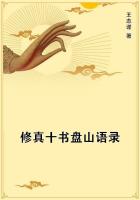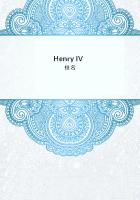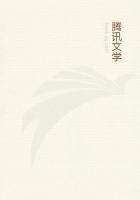Bent sharply at right angles, like a couple of broken matches, the antennae feel the cocoon with their tips alone. The terminal joint is the home of this strange sense which discerns from afar what no eye sees, no scent distinguishes and no ear hears. If the point explored be found suitable, the insect hoists itself on tiptoe so as to give full scope to the play of its mechanism; it brings the tip of the belly a little forward; and the entire ovipositor--inoculating-needle and scabbard--stands perpendicular to the cocoon, in the center of the quadrilateral described by the four hind legs, an eminently favorable position for obtaining the maximum effect. For some time, the whole of the awl bears on the cocoon, feeling all round with its point, groping about; then, suddenly, the boring needle is released from its sheath, which falls back along the body, while the needle strives to make its entrance. The operation is a difficult one. I see the insect make a score of attempts, one after the other, without succeeding in piercing the tough wrapper of the Stelis. Should the instrument not penetrate, it retreats into its sheath and the insect resumes its scrutiny of the cocoon, sounding it point by point with the tips of its antennae. Then further thrusts are tried until one succeeds.
The eggs are little spindles, white and gleaming like ivory, about two-thirds of a millimeter in length. They have not the long, curved peduncle of the Leucospis' eggs; they are not suspended from the ceiling of the cocoon like these, but are laid without order around the fostering larva. Lastly, in a single cell and with a single mother, there is always more than one laying; and the number of eggs varies considerably in each. The Leucospis, because of her great size, which rivals that of her victim, the Bee, finds in each cell provisions enough for one and one alone. When, therefore, there is more than one set of eggs in any one cell, this is due to a mistake on her part and not a premeditated result. Where the whole ration is required for the meals of a single grub, she would take good care not to install several if she could help it. Her competitor is not called upon to observe the same discretion. AChalicodoma grub gives the dwarf the wherewithal to portion a score of her little ones, who will live in common and in all comfort on what a single son of the giantess would eat up by himself. The tiny boring engineer, therefore, always settles a numerous family at the same banquet. The bowl, ample for a dozen or two, is emptied in perfect harmony.
Curiosity made me count the brood, to see if the mother was able to estimate the victuals and to proportion the number of guests to the sumptuousness of the fare provided. My notes mention fifty-four larvae in the cell of a masked Anthophora (Anthophora personata).
No other census attained this figure. Possibly, two different mothers had laid their eggs in this crowded habitation. With the Mason bee of the Walls, I see the number of larvae vary, in different cells, between four and twenty-six; with the mason bee of the Sheds, between five and thirty-six; with the three-horned Osmia, who supplied me with the largest number of records, between seven and twenty-five; with the blue Osmia (Osmia cyanea, KIRB.), between five and six; with the Stelis (Stelis nasuta), between four and twelve.
The first return and the last two seem to point to some relation between the abundance of provisions and the number of consumers.
When the mother comes upon the bountiful larva of the masked Anthophora, she gives it half-a-hundred to feed; with the Stelis and the blue Osmia, niggardly rations both, she contents herself with half-a-dozen. To introduce into the dining room only the number of boarders that the bill of fare will allow would certainly be a most deserving performance, especially as the insect is placed under very difficult conditions to judge the contents of the cell.
These contents, which lie hidden under the ceiling, are invisible;and the insect can derive its information only from the outside of the nest, which varies in the different species. We should therefore have to admit the existence of a particular power of discrimination, a sort of discernment of the species, which is recognized as large or small from the outward aspect of its house. I refuse to go to this length in my conjectures, not that instinct seems to me incapable of such feats, but because of the particulars obtained from the three-horned Osmia and the two mason bees.
In the cells of these three species, I see the number of larvae put out to nurse vary in so elastic a fashion that I must abandon all idea of proportionate adjustment. The mother, without troubling unduly whether there be an excess or a dearth of provisions for her family, has filled the cells as her fancy prompted, or rather according to the number of ripe ovules contained in her ovaries at the time of the laying. If food be over-plentiful, the brood will be all the better for it and will grow bigger and stronger; if food be scarce, the famished youngsters will not die, but will remain smaller. Indeed, with both the larva and the full grown insect, Ihave often observed a difference in size which varies according to the density of the population, the members of a small colony being double the size of their overcrowded neighbors.















